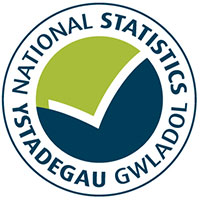Data for young people by age, gender, region and disability for October 2021 to September 2022.
This is not the latest release in the series: Young people not in education, employment or training (NEET)
Main points
16 to 18 year olds
There was a small gradual decrease in the proportion of 16 to 18 year olds who were NEET between 2011 and 2017. On the Statistical First Release (SFR) basis, this proportion has increased since. On the Annual Population Survey (APS) basis, the proportion is also higher in 2021 than it was in 2017 but has fluctuated in that time. There is an increasing divergence between the SFR and APS NEET estimates. See the quality information of the annual statistical bulletin for more detail.
On the SFR basis, provisional figures indicate that 13.6% (14,200) of 16 to 18 year olds were NEET at end 2021 compared with 11.7% (11,900) at end 2020. This increase is largely driven by an increase in the economic inactivity rate (excluding students) for 16 to 18 year olds, though there was also a slight increase in unemployment.
Timelier data from the APS series indicates that NEET rates have since decreased. On the APS basis, for the year ending September 2022, 8.7% of 16 to 18 year olds were estimated to be NEET, compared with 9.1% at the year ending September 2021. It should be noted that the figure for the year ending September 2022 is based on between approximately 25 and 40 responses and is categorised as being of limited quality.
19 to 24 year olds
On the SFR basis, provisional figures indicate that 16.3% (37,800) of 19 to 24 year olds were NEET at end 2021, an increase compared with 15.8% (37,700) in 2020.
After the start of the 2008 recession the proportion of 19 to 24 year olds who were NEET saw a large increase from 17.4% in 2008 to around 22% to 23% from 2009 to 2012, decreasing in each subsequent year up to 2017. The decrease was driven by increased labour market activity, with participation in education and training remaining fairly stable.
On the Annual Population Survey (APS) basis, for the year ending September 2022, 14.2% of 19 to 24 year olds were estimated to be NEET, compared with 15.1% for the year ending September 2021.
Statistical sources
SFR ‘Participation of young people in education and the labour market’ using education data sources and the APS.
APS (Office for National Statistics).
It should be noted that each of these sources are estimates. Our guide to understanding the different sources of statistics on young people not in education, employment or training in Wales providers further information.
Data
Datasets and interactive tools
Young people not in education, employment or training (NEET): October 2021 to September 2022 , file type: ODS, file size: 20 KB
Contact
Catherine Singleton
Email: post16ed.stats@gov.wales
Rydym yn croesawu gohebiaeth yn Gymraeg / We welcome correspondence in Welsh.

